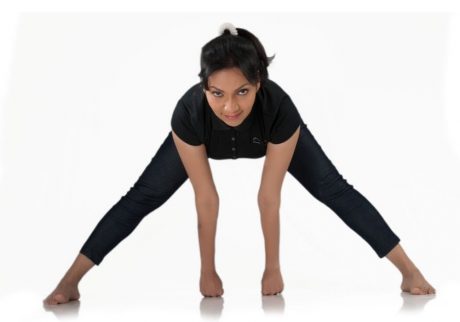12 mind-blowing yoga poses you must follow every day to feel great

Doing yoga every day helps you transform your body and mind drastically. But there may be times when your busy schedule hardly spares you the ‘me time’ essential for fitness. While it is highly recommended to practice yoga poses, asanas, and kriyas at least for an hour a day, sometimes it is not possible to […]
Shwet Yoga Classes | 6 Effective ways yoga asanas soothe menopause symptoms

Many women have experienced relief in hot flashes and pain caused due to menopause with the practice of restorative yoga asanas. You can simply do these asanas at home or can join a studio yoga program at yoga classes in your locality. At our Shwet yoga classes in thane, we provide medical therapeutic classes specially […]
7 amazing yoga asanas to keep diabetes under control

Diabetes has become a grave concern among the middle-aged population nowadays. It is a multifactorial disorder caused mainly due to irregular eating habits, lack of exercise and sleep, increased stress level, etc. Many studies by the Medical research institutes and expert dietitians have suggested that regular exercise especially yoga asanas and a healthy diet can keep […]
Gained extra pounds post festivities? Yoga for weight loss | Must try poses

As the festive fever is finally over the unhealthy and overeating is haunting many of us. The fun period of sharing and enjoying the sweets and other oily, fat stuffed snacks is over, and now is the time to burn those extra calories. If you are wondering where to begin from then these are some poses […]
12 highly recommended yoga asanas that you should exercise daily

Yoga originally started in India, is an ancient practice followed for ages to stay fit and healthy. Due to the enormous power of healing and nurturing, yoga asanas have been included in the fitness regime of most people all over the world. Though many people still feel that yoga is not an intensive workout, research […]
6 Incredible benefits of Kapalbhati : A complete guideline

There are endless benefits of kapalbhati. Many breathing exercises are an integral part of the yogic journey. Pranayama and shudhhi kriya is one such dedicated branch of the yoga abhyasa where the emphasis is given on controlling the breath and revitalizing the internal organs. Various toxins are removed in the process and your source of energy renews. Kapalbhati is also called- […]
9 Powerful yoga asanas for work from home people

With the ongoing outbreak of a pandemic situation, many organizations are still operating remotely. And many of them are considering adapting and continue this changed working scenario in the future too. Working from home requires discipline and commitment. Daily practice of yoga asanas cultivates the required focus and increases productivity and efficiency. While working from home seems […]
12 Effective yoga postures for infertility and conceiving

Recent studies suggest that women nowadays are facing difficulty in conceiving due to various factors including stress, irregular monthly cycle, and hormonal distress. Can yoga treat infertility in women and increase their chances of conceiving? Are there any specific yoga postures that help females to attain complete womanhood? The answer is a big YES. Being a […]
Ashtanga Yoga: your fitness partner for complete body transformation

The term ashtanga yoga literally means “eight-limbed yoga”, mentioned in Yoga Sutras by Sage Patanjali. According to the yoga sutras, it is the ultimate way of internal purification. It connects the universal self with the eight spiritual practices or sutras- Yama (morals), Niyama (self-purification and connection), Asana (postures), Pranayama (breathing), Pratyahara (self-awareness and control), Dharana […]
Benefit of Surya Namaskar I Top 9 unexpected health benefits

From time immemorial people from all civilizations and cultures have worshipped Sun as the ultimate source of energy and life. Like the Sun’s continuous flow of energy benefit of Surya Namaskar is also never-ending. Surya Namaskar is the ancient technique to pay the tribute of salutation to the enduring positive energy it gives us throughout […]
